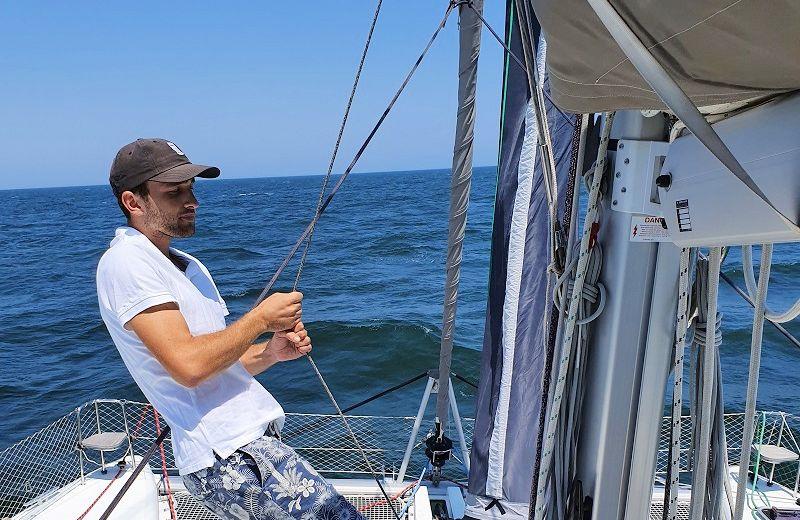
Practical Tips on Cruising Halyard Locks
by Prinal Shah 2 Oct 2019 09:00 BST

Halyard locks for cruisers © Jason Ball
Halyard locks are almost universally accepted in racing circles and are becoming increasingly popular with long distance cruisers, as they recognise the significant benefits.
Benefits of a halyard lock:
- Takes away the worry of halyard chafe on long voyages
- Reduces mast compression
- Reduces weight and wear of halyards
So, they are a very positive additional to the equipment list, BUT they do take some getting used to.
An upffront.com customer with a Lagoon 450 embarked on a world cruise last year and decided to retrofit a Facnor 3-ton external halyard lock for his code zero and asymmetric spinnaker.
Proper setup is crucial
The customer initially had problems until we realised that his lock was incorrectly installed.
The angle of entry of the bullet into the Facnor external lock is essential (see image). The adjustable lashing and thimble, supplied with the lock, is used to ensure it is hanging at the right angle. Without correct alignment of the lock, damage can be caused to the bullet and problems can be experienced with the locking mechanism.
Locking and unlocking technique
Once the lock was set up correctly however, another common concern is how you know whether the lock has engaged or not. When hoisting the sail up a on a winch, it can be difficult to "feel" if the lock is on and there is a risk that the bullet can be over hoisted which can damage the mechanism.
Our Lagoon 450 customer has developed his own simple and effective solution to this problem:
The sail is hoisted to within 15-20cm from the lock and the halyard is cleated off.
Then a crew member bounces the halyard into the lock, at the mast. The crew can quickly and easily tell if the lock has engaged when the tension comes off the hoist line.
As a precaution, the 20cm of slack can be taken up on the halyard clutch. Then, when it is time to drop the sail, you first ease the unloaded line in the halyard clutch by 5-10cm and load the halyard on the winch.
The crew member bounces the halyard to release the lock and then the tension is taken back on the winch for a controlled drop.
Locks are increasingly popular and a real benefit for cruisers as well as racers but it is important to make sure your lock is set up correctly and it is advised to carefully read the manufacturer instructions prior to use. Manually bouncing the halyard on and off the lock is a simple, safe and reliable method.
If you are considering upgrading to a halyard lock, please get in touch and we will be happy to help.